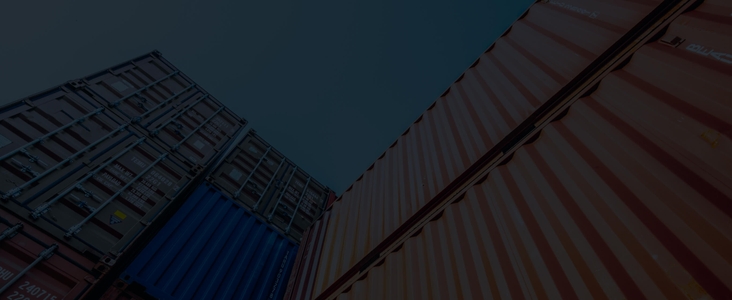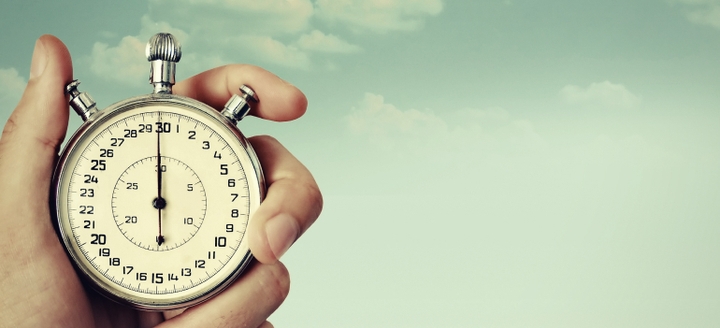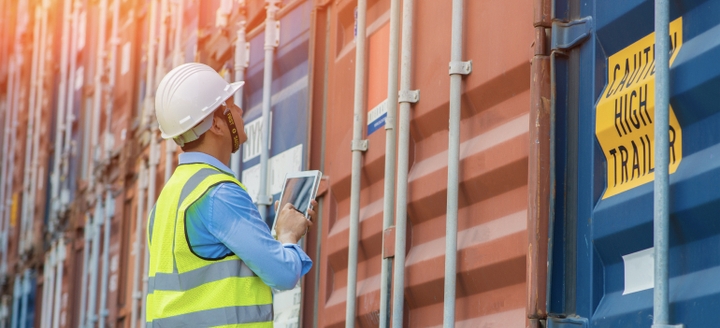
Container Shipping to Thailand
Get information and quotes for FCL and LCL shipping
Thailand is one of the top importers of goods such as car parts, computers, gold, integrated circuits, and smartphones. If your business is engaged with these products or you want to ship other merchandise to Thailand, you need to know as much as you can about the shipping process.
In this article, we give you all the details to ship a container to Thailand. From your shipping options to the Incoterms you need to use, learn everything you need to know about shipping containers to Thailand.
What are your options for container shipping to Thailand?
Ocean freight is the mode of shipment to use to ship a container to Thailand. Your options are either less than container load or full container load.
Less than Container Load (LCL) to Thailand
Less than container load shipping is best for shipping small cargo in small quantities. That’s because, in this mode of shipment, your cargo is consolidated with consignments belonging to other sellers. That means that LCL is also cheaper compared to FCL, but it can have a longer transit time.
Full Container Load (FCL) to Thailand
On the other hand, if you are shipping large cargo or in large quantities, FCL may be a good option. This mode of shipment does not require consolidation. Hence, you have the whole container to yourself and can utilize the entire space as needed. But that also entails that FCL may be more expensive. The cost, however, is worth it, especially considering the faster transit time.
How much does it cost to ship a container to Thailand?

The cost of your shipment to Thailand would depend on various factors, including:
- Type of goods you are shipping
- Your choice of shipping service (LCL or FCL)
- Weight of your cargo
- Volume of your cargo
- Distance between your port of origin and destination
- Movement type (door-to-door, port-to-port, etc.)
If you need a more accurate estimate of your shipping costs, you can request a quote from your freight forwarder.
What type of cargo can be sent in a container?
Because you will be shipping by sea, you have more liberty when it comes to the type of cargo you can ship. Ocean freight accepts a broad range of different items, from food and toys to cars and machinery.
However, you need to be aware of the restricted and prohibited goods in Thailand. Some goods may require additional paperwork, while others may not be allowed in the country at all.
How long does it take to ship a container to Thailand?

The duration of your shipment will depend on a variety of factors, including your choice of ocean freight (LCL or FCL), the distance between your point of origin and Thailand, as well as if your ship is direct or has multiple stops.
On average, it can take 6 to 58 days for your shipment to complete. Here are some estimated transit times.
Country of Origin|LCL Transit Time|FCL Transit Time| ------- | ---------------- | ---------------- |----------: Australia|26 - 33 days|29 days China|13 - 29 days|8 - 31 days Germany|38 days|33 - 45 days India|23 days|15 - 21 days Indonesia|11 - 32 days|12 - 32 days Japan|16 days|13 - 21 days Philippines|20 days|14 - 21 days Singapore|6 days|12 days Taiwan|14 days|20 days United Kingdom|20 days|24 days United States|33 - 58 days|33 - 58 days
What container capacity do I need for my cargo?
Containers for ocean freight come in various sizes ranging from 20 feet to 45 feet. More specifically, they come in:
- 20 foot - 33.2 CBM
- 40 foot regular - 63.5 CBM
- 40 foot high cube - 76.4 CBM
- 45 feet high cube - 86 CBM
The type of goods you are shipping is important to determine the size of the container that you need. You need to be aware of your cargo’s size and dimensions. If you select LCL as your mode of shipment, we recommend that your goods do not occupy more than half of the container. Otherwise, your shipment will cost a lot and it might be more cost advantageous to simply select FCL in this instance.
If your chosen mode of shipment is FCL, however, you don’t need to worry about the size and volume of your cargo, as long as it fits in the container. You can utilize the entire space of the container in FCL shipping.
Which mode of ocean shipping should I choose, FCL, LCL, or Break Bulk?
The right mode of ocean shipping for you would depend on your priorities, as well as the specifics of your cargo. Here are some pointers to help you make an informed decision.
Less Than Container Load (LCL) Shipping to Thailand
Less than container load shipping is best if your cargo is:
- Small in size or quantity
- Suitable for frequent handling or movement
- Not perishable, delicate, or fragile
- Suitable for consolidation with other cargo
- Not expected in Thailand at an urgent manner
Full Container Load (FCL) Shipping to Thailand
Full container load may be a better option for you if your cargo is:
- Large, bulky, overweight, or heavy
- Not suitable for frequent handling or movement
- Perishable, delicate, or fragile
- Not suitable for consolidation with other cargo
- Expected in Thailand within a quicker timeframe
Break Bulk
If your cargo cannot fit in a single container, your freight forwarder may recommend breakbulk shipping. In this mode of shipment, your goods will be packed separately and shipped in different containers.
Customs Clearance in Thailand

Before your goods can enter Thailand, they will need to go through customs clearance. This process should be easy, provided that you present complete and correct paperwork. Here are the documents that you need:
- Commercial invoice
- Letter of credit/ other payment terms
- Packing list
- Certificates of origin
- Import licenses
- Bill of lading or airway bill, provided by Shipa Freight
For examples of the required customs clearance documents, you can check out our full documents list.
Which Incoterms would be the right choice for my shipment?
Using the right Incoterms to govern your international shipment is crucial so you can set your rights and liabilities, as well as those of your buyers’. Here are the best Incoterms to use:
Best Incoterms for Exporters
-
CPT (Carriage Paid To): The seller must bring the goods to the agreed destination and carry out a contract of carriage. The seller is liable until the goods have been handed to the carrier.
-
CIP (Carriage and Insurance Paid To): Similar responsibilities as CPT, but with the added requirement on the seller’s part to obtain insurance.
-
DAP (Delivered At Place): The seller should deliver the goods to the buyer’s selected location and is responsible for the majority of the shipping process.
-
DDP (Delivery Duty Paid): The seller is responsible from the beginning to the end of the shipping process. This leaves the buyer with minimal responsibilities.
-
FCA (Free Carrier): The seller must deliver the goods to the carrier and shoulder the costs of customs.
Best Incoterms for Importers
-
FCA (Free Carrier): The seller must deliver the goods to the carrier and shoulder the costs of customs.
-
EXW (Ex Works): More responsibility is put on the buyer’s part, from picking up the goods at the seller’s premises or
warehouse to arranging transport.
Processes to follow to ship a container to Thailand
We recommend that you engage a freight forwarder when shipping a container to Thailand. They are knowledgeable about the shipping process and can ensure that everything goes smoothly and your cargo gets from point A to B successfully.
When you’ve engaged a freight forwarder, you will then need to select your chosen mode of ocean shipping. If you choose LCL, your goods will be consolidated with consignments from other sellers. FCL does not go through the consolidation process.
When your goods are loaded onto the vessel, the fumigation process will begin to eliminate pests, insects, and other harmful organisms that may damage the cargo. Then your ship will begin its voyage to Thailand.
Upon arrival, all imports will go through customs clearance. With the right paperwork, this process should be easy and stress-free. Once your goods are cleared for import, you can now pick them up at the port of destination in Thailand. If you select port-to-door or door-to-door movement type, then your goods will be delivered to your selected location.
Main container ports of arrival in Thailand
Bangkok
Also known as the Khlong Toei Port, the Bangkok port is located on Thailand’s Chao Phraya River. It is one of the world’s busiest container ports, ranking among the top 100. The port holds two container terminals in its Easy Quay, both of which have access to road and railroad systems.
Owned By: Port Authority of Thailand Annual Container Volume: >1.5 million TEUs UN/LOCODE: THBKK
Laem Chebang
The Laem Chebang port is an alternative to the Port of Bangkok. It is located in the province of Chonburi, close to the areas of Chonburi, Nong Kham, Pattaya City, and Surasak. This port boasts the most advanced container terminals in all of Thailand.
Owned By: Hutchison Laem Chebang International Terminal Ltd Annual Container Volume: >500,000 TEUs UN/LOCODE: THLCH
Why Ship a Container to Thailand With Shipa Freight?
Shipa Freight can offer you a more convenient way of shipping your cargo to Thailand through our digital platform. From the comfort of your mobile phone, you can:
- Request a quote
- Order your shipment
- Manage your shipments
- Track your shipment
- Access customer service 24/7
Enjoy a hassle-free and more convenient mode of shipping with Shipa Freight. Request a quote from us today.


